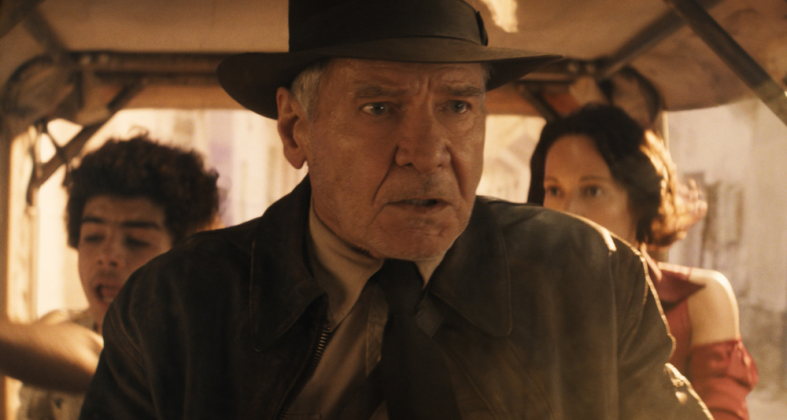
Disney’s “Indiana Jones and the Dial of Destiny” has become emblematic of the perils and pitfalls of modern blockbuster filmmaking. Despite the fervent anticipation surrounding the return of Harrison Ford as the intrepid archaeologist, the film’s journey to the silver screen was fraught with challenges and setbacks from the outset.
From injuries sustained on set to production delays exacerbated by the global pandemic, the film faced an uphill battle long before it hit theaters. Steven Spielberg’s departure as director further underscored the tumultuous nature of the project, leaving many fans and industry insiders skeptical about its prospects for success.
Forbes journalist Caroline Reid’s meticulous analysis of UK tax documents provided a sobering glimpse into the financial reality of “Indiana Jones 5.” The revelation that Disney spent a staggering $134.2 million more on production costs than it recouped in ticket sales served as a stark reminder of the film’s commercial failure.

But the financial woes of “Indiana Jones and the Dial of Destiny” extend far beyond production expenses alone. Marketing costs, which are not accounted for in the UK tax documents, likely amounted to at least $120 million, further exacerbating the studio’s losses. When combined with production costs, the total expenditure on the film climbs to a staggering $234 million, a figure that far exceeds prior projections.
Despite Disney’s considerable investment in advertising and promotion, “Indiana Jones and the Dial of Destiny” failed to resonate with audiences, resulting in lackluster box office returns. With a worldwide gross of just $384 million, the film fell short of expectations, failing to surpass its predecessor, “Indiana Jones and the Kingdom of the Crystal Skull,” in terms of earnings.
The film’s lackluster performance at the box office was compounded by scathing reviews from critics, who criticized its narrative shortcomings and overreliance on spectacle. While audience reception was somewhat more favorable, it was not enough to offset the film’s substantial financial losses.

RELATED: MasteroftheTDS Exposes Disney’s Bot Deployment In Support Of Blackwell Capital
The financial statements filed with the UK government offer a detailed breakdown of the film’s expenditures, shedding light on the magnitude of Disney’s investment in the project. From production costs to post-production expenses, every aspect of the film’s budget is meticulously documented, revealing the extent of the studio’s financial exposure.
The decision to shoot “Indiana Jones and the Dial of Destiny” in the United Kingdom was driven in part by the country’s generous tax incentives for film production. By setting up a separate UK subsidiary, Disney was able to take advantage of these incentives, offsetting some of the film’s production costs.
However, even with the benefit of tax credits, “Indiana Jones and the Dial of Destiny” proved to be a costly endeavor for Disney, with the studio ultimately absorbing a substantial financial loss. The failure of the film to recoup its production costs raises questions about the viability of future installments in the franchise and the studio’s broader strategy for blockbuster filmmaking.
As Disney grapples with the fallout from “Indiana Jones and the Dial of Destiny,” the legacy of the iconic adventurer hangs in the balance. Will the studio continue to invest in the franchise despite its commercial shortcomings, or will the Dial of Destiny mark the end of an era for Indiana Jones? Only time will tell.
What do you think of Indiana Jones and the Dial Of Destiny flopping for Disney? Leave a comment and let us know.
NEXT: Major Disney Shareholder Nelson Peltz Slams Woke Disney & Marvel

It’s physically impossible for them to create anything good anymore. It can’t be done. It won’t happen, ever. lol